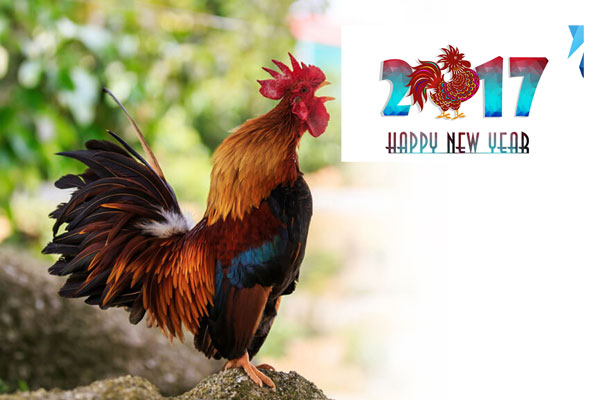
A rooster is wise and productive, staying alert throughout the day from dawn.
SIBU: Computer technician Kenny Lau from Sarikei recalled that when he got married in 1994, the elders in his family put two roosters in a cage to conduct his marriage ceremony.
He said two male fowls were brought to the bride’s house, and one was exchanged for a hen from the bride’s family. The rooster and hen were tied together by the feet with red string to symbolise the bond between a man and his wife.
Auspicious words were uttered for a lasting bond for the newlyweds to prosper together, live long and multiply. Although Lau is a modern day information technology expert, he followed this tradition handed down to bless him and his wife with luck, prosperity and fruitfulness.
He said the fowls would be brought back when he took the bride home, and they would be reared to grow and reproduce, as they prosper with the newlyweds.
“Twenty-three years have passed. Indeed, my family has grown. My wife and I are blessed with four children. Our eldest daughter has graduated from law in England. We both have steady jobs and own a terraced house with some savings in the bank.”
Lau, who now settles in Sibu, was unsure whether it was this custom that had blessed his marriage, but it was performed for such purpose.
“I’m talking about this old marriage custom involving fowls as it is now the Year of the Rooster – a creature that is wise and productive. The fowl stays alert throughout the day from dawn.” He said roosters symbolise prosperity.
“I guess this is why it has made its way into the Chinese zodiac.” He said he might not be familiar with all Chinese marriage customs but would consult the elders to pass on this tradition to his children.
“This chain of happiness, prosperity and productivity in a family must not be broken. It musst continue to be handed down.” Lau said this practice performed with the fowls was called ‘red-string chicken feet’ ceremony in Foochow.
Why is it performed with red string?
He said this was handed down from the folklore of a matchmaker from the moon – similar to the Roman tale of Cupid that binds lovers. He said the moon matchmaker tied a couple together with a piece of red string.
“The red string symbolises the couple’s obligation or bond, similar to that of a Christian marriage vow of ‘Till death do us part’.”
He said with this custom signified the couple was legally married, and the bond must not be broken in good times and in bad, in sickness and in health – similar to a Christian vow.
A Google search shows such a centuries-old practice is still common in southern China of Fujian and Guangdong Provinces where the descendants of the seven dialectal clans of Sibu come from.
In modern China, where live fowls are not easily available for city dwellers staying in condominiums, those getting married replace them with a toy rooster and hen, but the significance of the custom remains. Descendants of the various dialectal clans in Sibu practise the ‘red-string chicken feet’ marriage custom with slight variations.
Deputy head of the custom research committee of Sarawak Chinese Culture Association Chua Chen Choon, a Hokkien, confirmed the practice in his clan. He said the hen prepared by the bride’s family was referred to as ‘the fowl that bring the bride home’ so her bond with her parents would remain. He said such a wish was put in the custom because, according to the tradition, once a daughter was married, she belonged to the family of her husband.
“Another wish is put on the hen, that as their daughter lives with her husband, she will reproduce for his family, just like a hen would.”
He said on the wedding night, the fowls would be placed under the bed in the hope the hen would lay an egg to ensure the blessing of fertility. A committee member of Sarawak Chinese Culture Association Lee Ai Siang, – a Teochew – confirmed the practice in their clan.
“In the wake of the changing times, not only toy fowls are used for convenience, there are some who replace them with ang pows, but the modern practice carries similar cultural significance and the money in the red packets must not be spent.”
A committee member of SJKC Tung Kiew management board, Lee Pak Liang who is a Hakka said their Clan would insist that the red string measure nine feet, because the number represents long lasting in the Chinese language.
For Lau, apart from tying the red string to the fowls in marriage, there was another cultural practice related to the fowls – preparing chicken soup in red wine to serve with longevity noodles (mee sua) and hard boiled eggs.
“In my wedding, my wife and I were served this cultural dish after the ‘tea ceremony’ when we served tea to our parents as a sign of filial duty.”
He said the chicken soup noodle dish symbolised prosperity, health and longevity, while the eggs symbolise the descend of heavenly peace on his family. “We shall carry on with these practices because customs teach us about life values.”
